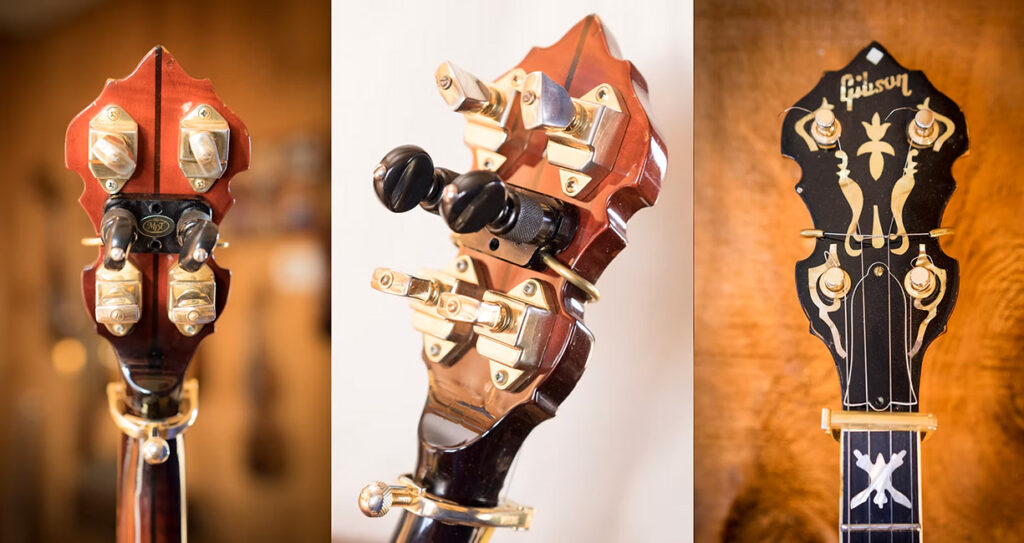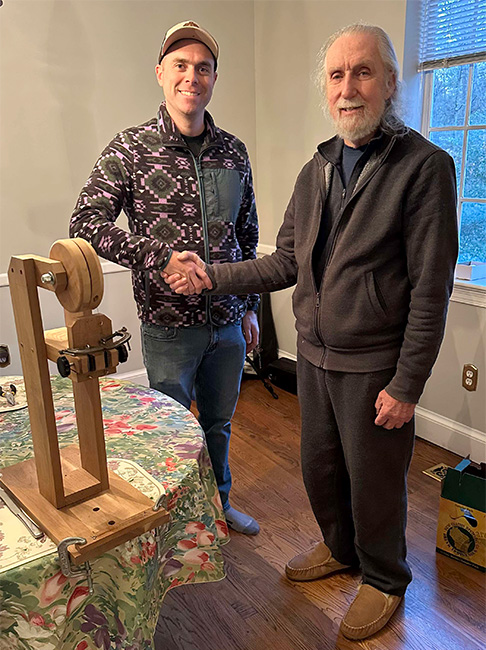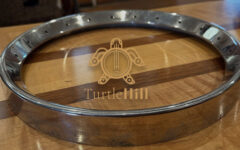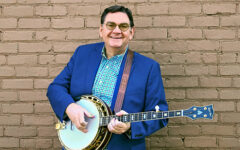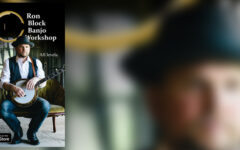
Banjo players have long sought the “perfect” D-tuners, the devices that allow them to effect the slurring, or “detuning” sound popularized by Earl Scruggs in such tunes as Flint Hill Special, Earl’s Breakdown, and Randy Lynn Rag.
Initially, Earl achieved this sound by simply lowering and immediately re-raising the pitch of a string manually, by turning the tuning peg, but that turned out to be something of a crapshoot in the middle of a fast moving banjo tune. If you didn’t get it back to exactly the right pitch, you were left with a string out of tune while your left hand was needed on the fingerboard to complete the tune.
So Scruggs devised a system using a pair of cams attached to the banjo headstock which performed brilliantly by pushing the strings aside, thereby raising or lowering their pitch, but as they required that two holes be drilled through the banjo headstock, there were only a limited number of players willing to make that modification to their highly valuable instruments.
Other systems came into use, such as the popular Keith/Scruggs tuners, developed by Bill Keith, which offered a replacement banjo tuning peg with stops that could be set by built-in screws, allowing you to set the amount of throw any tuner would move when set, and then return to the spot where you started. They also work quite well but need to be maintained occasionally. John Hartford and Béla Fleck have used them to great effect.
Other variations on the cam system have also been introduced that didn’t require holes drilled through the headstock, like the Cheat A Keys marketed by Gold Tone, and one offered for a while known as Sonny’s Ugly Tuners, created by Sonny Osborne.
One that was popular among its users, but only available in a limited supply, was called the Apollo Tuner, designed and built by Coy Willis in his small shop in Indiana. They functioned like Earl’s original cam system, by use of a piece of heavy wire pushing down on the strings. When you turned one of the two extra tuner pegs installed, it would release additional pressure on the string, allowing it to lower in pitch.
But once Coy lost interest in building the Apollo Tuner, the supply dried up. That is until banjo player Ron Wedekind found a set, installed them on his banjo, and loved their ease of use and “set-it-and-forget-it” effectiveness. Ron found Coy Willis and convinced him to sell him the various components and CAD drawings needed to take over manufacture. Supply was then limited by the time Ron was willing to dedicate to building these tuners, which he renamed The Mighty D-Tuner.
Now Ron is ready to turn the company over to someone else, and young banjo entrepreneur Danny Stewart has stepped up and bought the business from Wedekind. Stewart tells us that he has reached an agreement with Ron, and picked up the components and the jig used to assemble them himself.
“As of yesterday, I’m excited to announce I’m taking over the company and building them / offering them to the banjo community. With many other brands now being made overseas, it’s exciting to keep this one here made in the USA!
These are the best D-Tuners I’ve ever used, and have a very slim profile so you can still see your beautiful banjo peghead!
If you’ve ever tried them, you know they’re awesome.”
Danny has been a figure in the east coast bluegrass scene for several years. He is the current bass player with the US Navy Band Country Current, and had worked previously with Larry Stephenson, Danny Paisley, Bobby Osborne, Karl Shiflett, and Randy Waller & the Country Gentleman. His father, also named Danny Stewart, is a well-known bluegrass promoter who offers a number of bluegrass-themed cruises each year.
Stewart the younger also took over the operation of Turtle Hill Banjo last summer, a top retailer and buyer/seller of professional new and vintage instruments in Maryland. So he is in the perfect position to keep The Mighty D-Tuner in business.
There are no plans to change the current price of $220 for this device, which can be easily attached to any banjo with high strength adhesive tape. This allows them to also easily be removed or switched to another instrument with no marring or damage to your headstock.
Full details on The Mighty D-Tuner can be found online, including installation and use.
